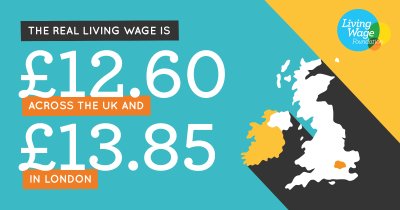 Copyright: Nuttawut Uttamaharad | shutterstock
Copyright: Nuttawut Uttamaharad | shutterstock
Funding for local food infrastructure and projects: what’s happening with Levelling Up funding?
From the announcement of the projects awarded with the second round of funding of the Government’s Levelling Up Fund, to progress in UK Shared Prosperity Funding, to the recent announcement of Rural England Prosperity Fund. This blog summarises opportunities and misgivings of levelling up funding streams, and implications for food partnerships.
Levelling up
Earlier this year the Government announced the projects awarded with the second round of funding from the Levelling Up Fund to mixed reviews. This time around, £2 billion has been awarded (out of a total fund of £5 billion) to over 100 projects across the whole country. This follows the announcement of £1.7 billion of funding awarded to 105 projects in Autumn 2021, which included funding to food-related projects in a few areas in our Sustainable Food Places network. One of the main criticisms of this fund is its competitive nature. Sources estimate that local authorities spend £27million on average preparing a bid but given the limited pot of money available many have been unsuccessful. This has led to renewed calls for decentralisation from left and right and allusions to a ‘begging bowl culture’. There were a few food-related projects funded this time around, most within a regeneration agenda. They include the Eden Project North in Morecambe, Accrington’s Town Square regeneration of the historic Market Hall which will be transformed into a modern food hall, and a new outdoor food market and event space in Melton Mowbray.
UK Shared Prosperity Fund
This is the government’s domestic replacement for the European Structural and Investment Funds programme (includes European Social Fund, European Regional Development Fund and part of the European Agricultural Fund for Rural Development). It’s non-competitive in the sense that all areas receive an allocated amount of the £2.6bn budget. Local authority investment plans were submitted in summer 2022 and approved by Government in December 2022 following three pillars or themes set by Government: Community and Place; Supporting local businesses; People and skills.
However, there are huge issues concerning devolution. When the UK was an EU member, Wales, Scotland and Northern Ireland could decide allocation priorities. Now funds are held centrally by Government and allocated directly to local authorities. There is also criticism regarding the total funding available. Post Brexit, nations are getting less in UKSPF allocations over a three-year period compared to previous European Structural and Investment Funds. Scotland is getting £212 million, a £337 million or 60% shortfall compared to pre-Brexit values. Wales is getting £632 million (UKSFP + Community Renewal Fund), a £772 million or 54% shortfall compared to pre-Brexit values. This is likely to become a political battle ground at the next general election.
Funding runs from 2022 to 2025 in three financial years. At a local level, there are rounds of funding open to applications from projects. Due to the delays in Government approval of the local investment plans, many local authority areas have decided to defer the 2022/23 allocations to the second year and are now launching their first round of funding for local projects. Other places are now in the second round. It’s worth checking in what the situation is in your local area – there may well be funding opportunities for your projects and ambitions. It’s down to each local authority area to identify priorities, projects and timescales.
Some areas in the SFP network are already plugging into this funding and submitting funding applications with other local partners for projects such as setting up a food hub. The big caveat with these funds is that unless the investment plan is tailored for investment in our sector, the chances to bid for funding for agricultural projects is limited. The fund may be small in tier-2 local authority areas or earmarked for a single type of investment such as a network of charging points for electric vehicles.
Rural England Prosperity Fund
This £110 million fund tops-up to the UKSPF and is available to eligible local authorities in England. It succeeds EU funding from LEADER and the Growth Programme which were part of the Rural Development Programme for England. Combined Authority areas (CAs), Unitary Authorities and Lower Tier Authorities have produced an individual investment plan and treat these as a single fund. This fund takes a different shape in other nations.
Investment plans were submitted in November, and approval of these was finally announced in April 2023. Like the Shared Prosperity Fund, it is ultimately down to local authority officers and councillors, who will have varied experience of dealing with this type of funding, to identify priorities, projects and timescales. Despite submitting spending plans in November, local authorities will be going through internal processes to be complete and signed off prior to promoting the programme. As such, there may be delays in launching the fund across different local authority areas until May or even June 2023. This leaves very little time for businesses to plan and prepare projects within the timescales. Equally for the authorities delivering the fund, it condenses a very short timescale for a capital grant programme such as this, even further. As such, there will be plenty of opportunity to obtain funding for projects, if these align to local spending plans.
Much of the detail within spending plans submitted to central government remains unknown, however there is known to be significant disparity across the country. To provide a flavour of this, some local authorities are looking at typical rural capital grant funding approach supporting businesses and communities with grants for capital projects. Within this traditional model there is a hugely diverse approach. Some areas will provide match funded grants up to £300,000 other areas are setting their maximum grant limit at £7,500. Within each area the themes that authorities want to support is also very different, some are focusing on local food, building the economy and others are wanting to install electric vehicle charging points. At the extreme end of the spectrum, it is understood that a local authority wants to spend their whole allocation on a road infrastructure project. Nationally, what has been implemented is said to be similar to the rural grant situation in 1995, and nothing short of a postcode lottery. Therefore, it is worth contacting your local authority to understand opportunities and timescales coming forward. More importantly who these opportunities will be available too and for what type of activity.
Sustainable Food Places: The Sustainable Food Places Network helps people and places share challenges, explore practical solutions and develop best practice on key food issues, so if you are working to drive positive food change or are interested in developing a programme, please do get in touch.
Sustain
The Green House
244-254 Cambridge Heath Road
London E2 9DA
020 3559 6777
sustain@sustainweb.org
Sustain advocates food and agriculture policies and practices that enhance the health and welfare of people and animals, improve the working and living environment, promote equity and enrich society and culture.
© Sustain 2024
Registered charity (no. 1018643)
Data privacy & cookies
Icons by Icons8








